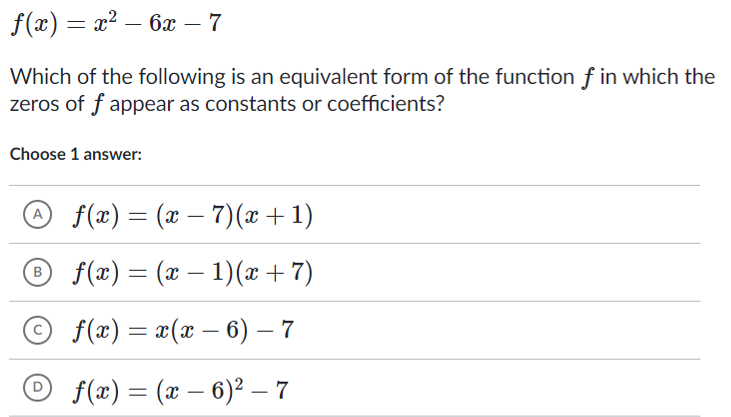Full solution
Q. Which of the following is an equivalent form of the function in which the zeros of appear as constants or coefficients?Choose answer:(A) (B) (C) (D)
- Factor the quadratic equation: To find the zeros, we need to factor the quadratic equation .
- Identify the two numbers: We look for two numbers that multiply to and add up to . These numbers are and .
- Write the factored form: Now we write the factored form using these numbers: .
- Check answer choices: We check the answer choices to see which one matches our factored form.
- Identify correct answer: The correct answer is (A) , which matches our factored form.
More problems from Quadratic equation with complex roots
QuestionGet tutor help
QuestionGet tutor help

